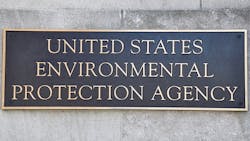New EPA regulations aim to significantly slash Ethylene Oxide emissions
The U.S. Environmental Protection Agency (EPA) is proposing new health protections to reduce exposure to Ethylene Oxide (EtO), including more stringent air emissions standards and additional protections for workers who are exposed to the gas used to sterilize medical devices and certain spices. If finalized, EPA’s proposals are estimated to cut EtO emissions to the air from commercial sterilization facilities by 80% per year and apply more protective standards to control those emissions under the law. Together, these proposals will provide a comprehensive approach to addressing EtO pollution concerns, including cancer risk, that will increase safety in communities and for workers while providing a path to maintain a robust supply chain for sterilized medical equipment.
The proposal advances President Biden’s commitment to ending cancer as we know it as part of the Cancer Moonshot and the Administration’s commitment to securing environmental justice and protecting public health, including for communities that are most exposed to toxic chemicals.
“EPA’s number one priority is protecting people’s health and safety, and we are committed to taking decisive action that’s informed by the best available science,” said EPA Administrator Michael S. Regann. “These proposals build on EPA’s extensive outreach to communities across the nation and reflects close coordination among key federal partners. Together they would significantly reduce worker and community exposure to harmful levels of ethylene oxide. EPA will continue to use every available tool to safeguard our nation’s communities, including workers, from exposure to toxic chemicals and to deliver important public health protections.”
The two new proposals announced today mark significant progress as EPA continues to leverage the full range of its regulatory authority under the law to protect public health by reducing the risk posed by EtO. Long-term exposure to EtO over the course of a 35-year career or 70-year lifetime in or near a commercial sterilizer can increase the risk of certain types of cancer. People who go to school near places where EtO is used are also potentially at an elevated risk of cancer due to EtO levels in the air. Actual risks will vary based upon a facility’s control measures for workers and community members and the distance and amount of time people live, work, or go to school near a facility.
These proposals were informed by collaboration across the federal government to deliver risk reductions while maintaining critical sterilization capabilities, including consultation between EPA, the U.S. Food and Drug Administration, the U.S. Centers for Disease Control and Prevention and Agency for Toxic Substances and Disease Registry, and the Occupational Safety and Health Administration. The proposals include controls that many facilities are already using, and that EPA would apply nationwide. The Agency has also undertaken robust public engagement on this topic and will continue to provide the public, especially in impacted communities and workplaces, with access to the information they need to make informed, independent judgements about risk and to encourage public involvement in the regulatory process.
